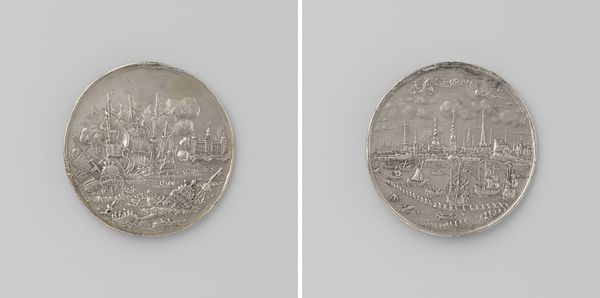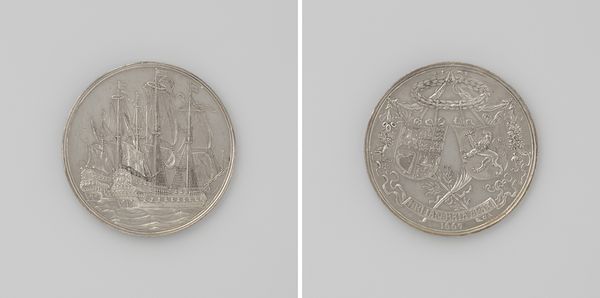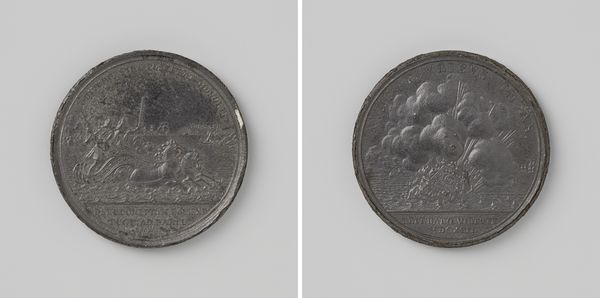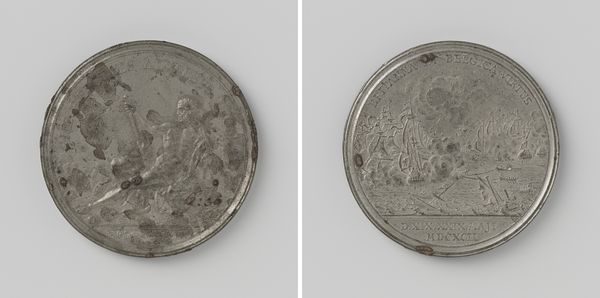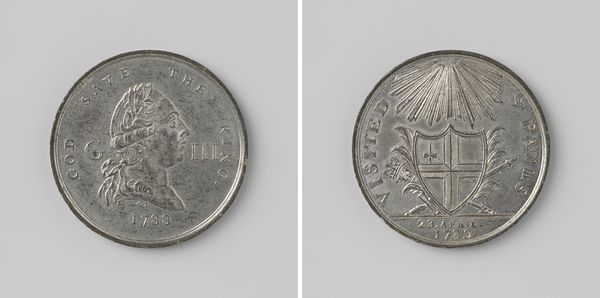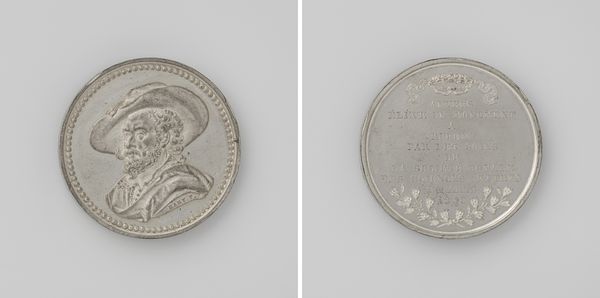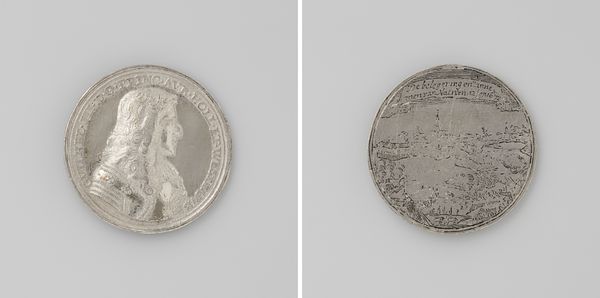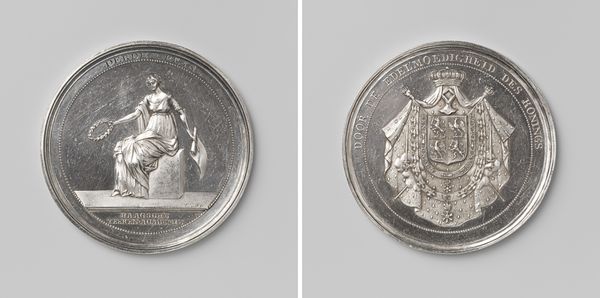
metal, relief, engraving
#
allegory
#
metal
#
relief
#
history-painting
#
engraving
Dimensions: diameter 2.8 cm, weight 6.61 gr
Copyright: Rijks Museum: Open Domain
Curator: Here we have a medal from 1748 by Theodorus Everardus van Berckel titled "’s-Hertogenbosch, Vroedschapspenning op de Vrede van Aken"—roughly translated, it's a medal struck by the city council of 's-Hertogenbosch to commemorate the Peace of Aachen. What strikes you about it at first glance? Editor: The immediate impression is one of austere celebration. The monochromatic metallic relief and carefully arranged figures create a sense of controlled jubilation—it's dignified rather than overtly joyful. Curator: Indeed. Notice the allegorical figures and Latin inscriptions. On one side, we see a figure of Mars, the Roman god of war, extinguishing a torch, symbolizing the end of conflict, juxtaposed against a skyline of what seems to be the city itself. Editor: And opposite, a classical female figure, presumably Pax, goddess of Peace, holding what appears to be a cornucopia. The careful inscription, "MITESCVNT TEMPORA PACE," translates to "Times grow mild with peace." It really speaks to the intended audience, the city's elite, aligning their aspirations with classical ideals. Curator: The choice of Mars is particularly interesting, as he is not destroying but stopping—a very nuanced way to celebrate peace while still acknowledging the military efforts that led to it. We tend to view history through a grand lens, while often forgetting the symbols that served very local narratives and beliefs. Editor: Right. Consider that this wasn’t just a symbolic gesture—these medals, commissioned by the city council, became tangible tokens of political maneuvering, reinforcing the council's position within the community. This reinforces how cities sought stability after large, tumultuous conflicts such as The War of Austrian Sucession (1740-1748), as did many of the parties involved. Curator: A potent reminder that objects, even those seemingly small and commemorative, are active participants in the shaping of cultural memory. And each has meaning beyond its size, and that such symbols may differ slightly for varied social actors. Editor: Absolutely, prompting me to wonder, what specific aspects of the Peace did the local government seek to highlight? Were there factions pushing a particular narrative regarding their participation in the war and the resultant peace treaty? Curator: That’s the beauty of delving into these artefacts. They're far more than pretty objects—they're locked chests full of complex stories. Editor: Agreed. They invite us to keep digging, revealing layers upon layers of sociopolitical context beneath their elegant surfaces.
Comments
No comments
Be the first to comment and join the conversation on the ultimate creative platform.
